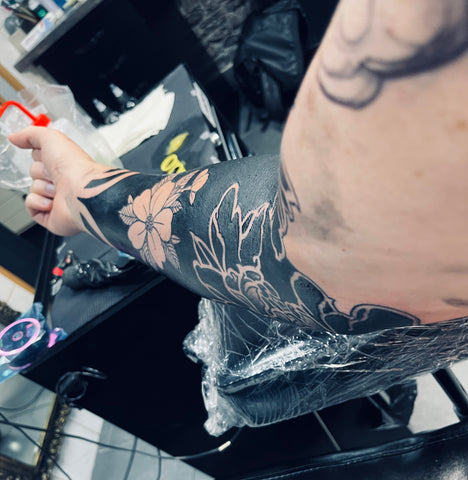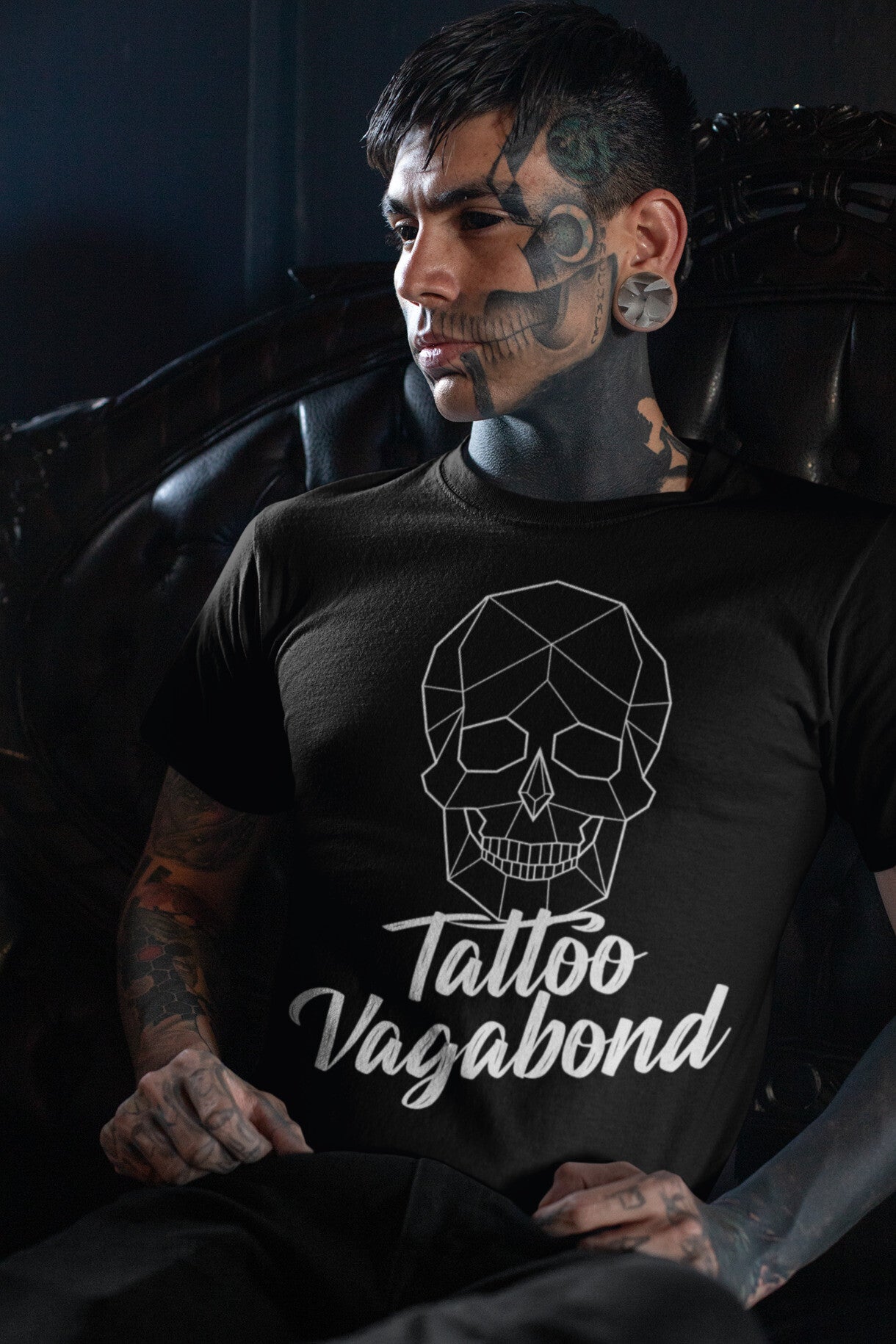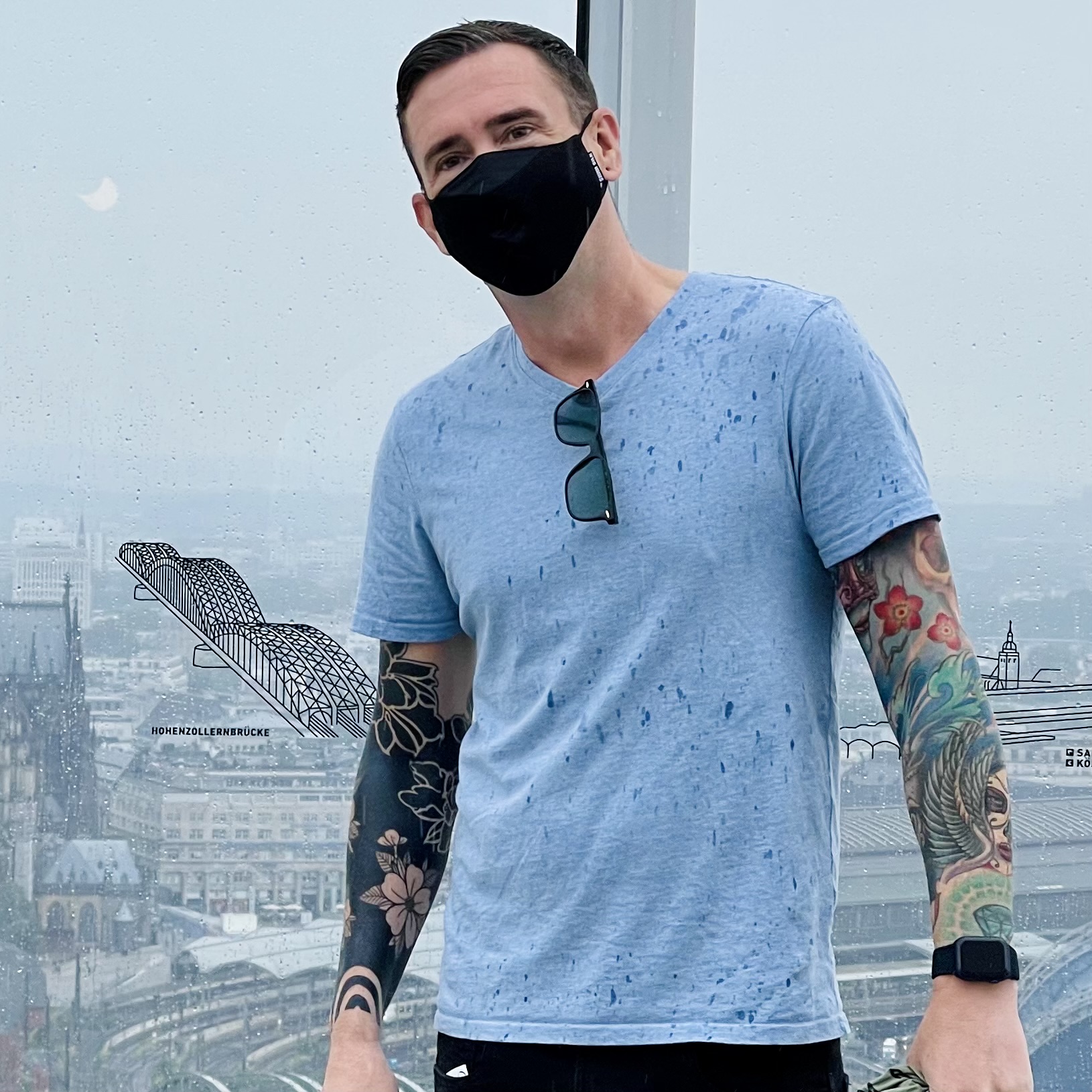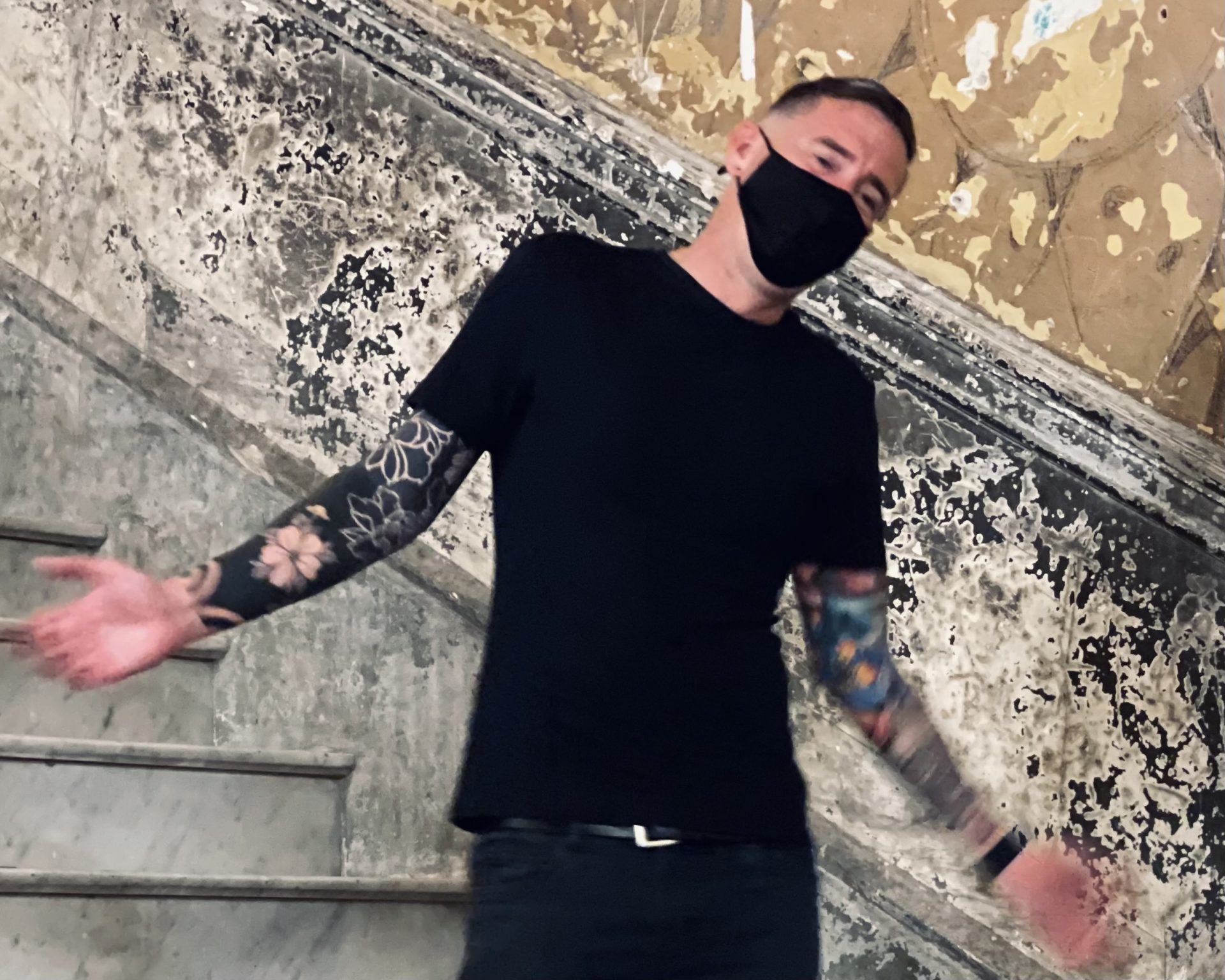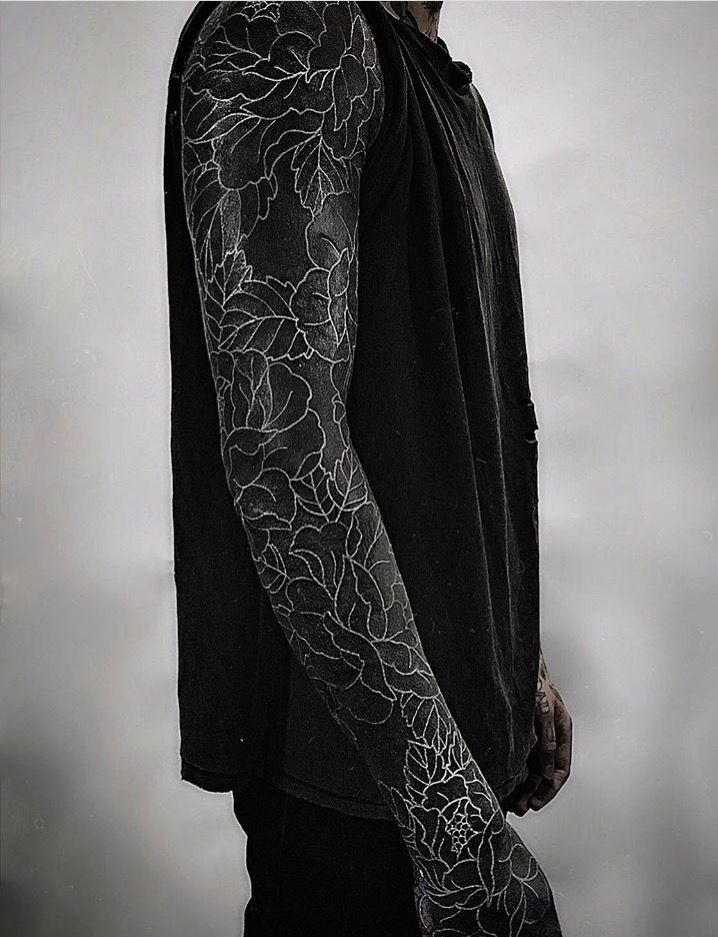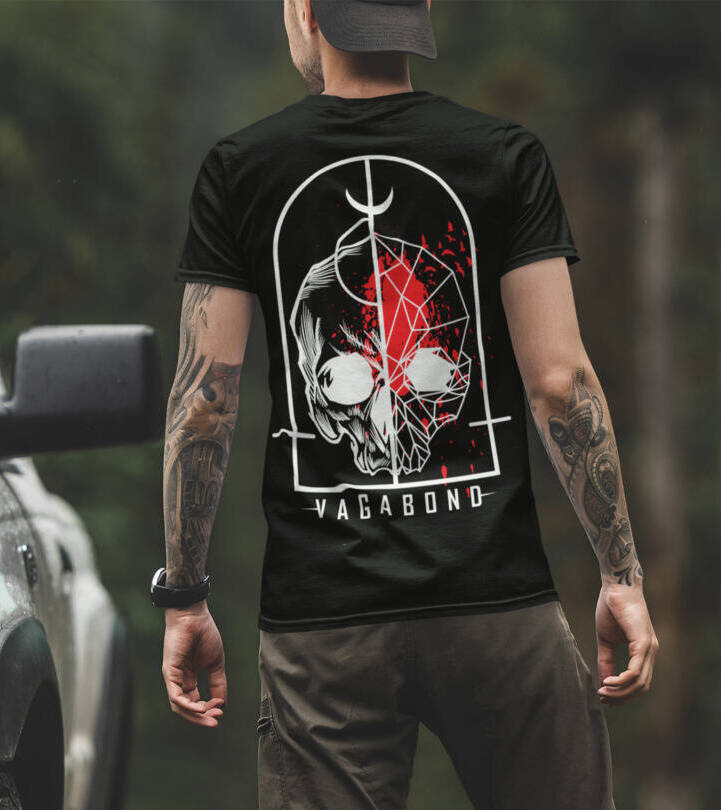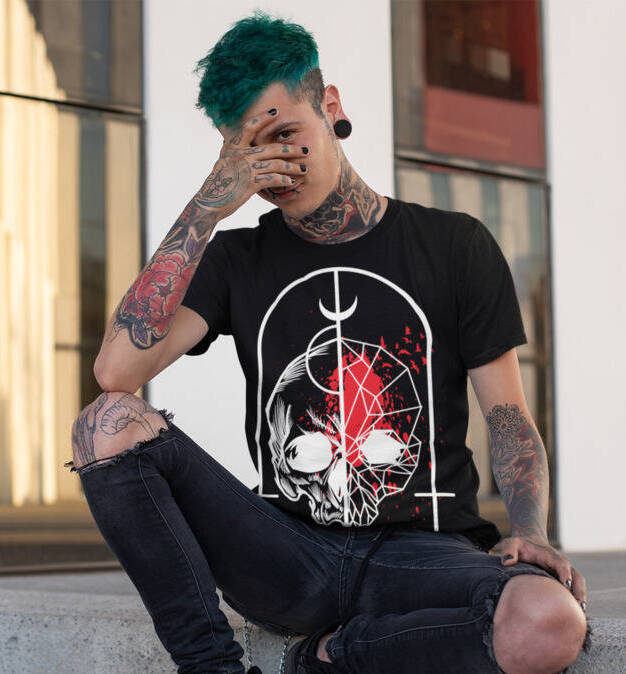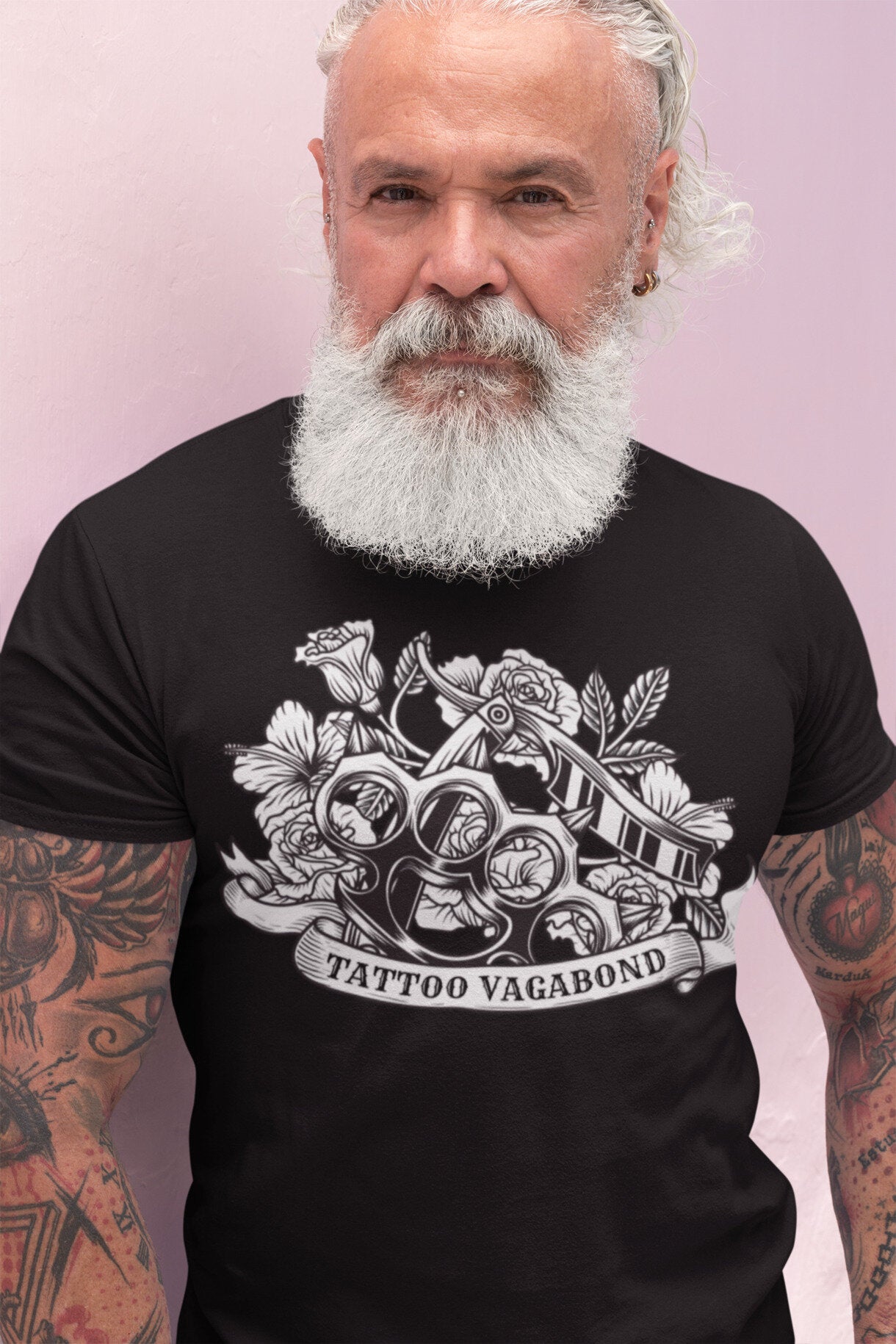A tattoo parlor can be an intimidating place for the uninitiated. The buzz of tattoo machines, the sight of inked skin and the unfamiliar lingo can be overwhelming. But don’t worry!
By the end of this glossary, you’ll be well-versed in the language of tattoos. From common tattoo terms to slang and specific techniques, we’ve got you covered.
In the list below, you’ll even find the common meanings behind certain tattoos. That way, you can avoid inadvertently getting a gang associated tattoo by mistake.
An Introduction to Tattoo Terminology
| Term | Meaning |
|---|---|
| “1%“ | 1% symbol means minority of society, not law abiding and ‘baddest of bad’. It’s used by motorcycle gang members who belong to clubs not recognized by the American Motorcyclist Association (AMA). |
| “81” | “81” is used to represent the Hells Angels. It’s a reference to the 8th (H) and 1st (A) letters of the alphabet, being HA for the Hells Angels. Red and white colors are also used to display the number 81 on many Hells Angels patches. |
| “88” & “311” | Represent references to white supremacy and hate groups. |
| “13” | A reference to the 13th letter of the alphabet, “M” for “Mafia”. |
| “222” | Often associated with balance, harmony, and faith. Can represent The Trinity. Is an ‘angel number’. |
| African Tribal Tattoos | Tribal tattoos with African origins, typically featuring bold geometric patterns. |
| Aftercare | The essential steps taken post-tattooing to ensure proper healing and prevent infection. |
| AK47 | The image of an AK series assault riffle in all black is associated with the Venezuelan transnational criminal organization (gang) called ‘Tren de Aragua‘. On females, it will be on the rear upper arm (triceps). And on males, it’s typically found on the neck or forearm. Other images commonly associated with the gang are the Air Jordan logo and a skull wearing a gas mask. |
| Apprentice | An apprentice is an aspiring artist who learns the craft under the guidance of an experienced tattooist. |
| Autoclave | An autoclave is a device that uses high pressure and steam to sterilize tattoo equipment. |
| Aztec War God (symbol) | Represents the Sureños’ affiliation with the Mexican Mafia. |
| Biomechanical | A unique style of tattooing that creates a robotic or cyborg-like aesthetic on the client’s skin. Biomechanical tattoos often involve freehand design and are tailored to the client’s body flow. |
| Black and Grey | Uses shades of black and grey for a monochromatic look, often seen in portraits and realistic tattoos. Popularized in the Chicano communities of East LA during the 1970s. |
| Blackout | A catchall term used to describe various styles within blackwork. Blackouts are often larger pieces covering the arms or legs that make use of large swaths of black ink. Blackout tattoos aren’t a single style, there are many forms of ‘blackout tattoos’ and they all fall within the domain of ‘Blackwork’. |
| Blackwork | A style that uses large panes of black ink. Blackwork only uses black ink and no shading. |
| Blowout | A blowout happens when a tattoo needle penetrates too deeply into the skin, causing the ink to spread out and create a blurry or cloudy effect around the tattoo. It’s an unwanted result that can occur, if the tattoo artist applies too much pressure or spends too long in one area. |
| Body Suit | A single full body tattoo or sequence of tattoos linked together like one large tattoo covering the majority of the body. |
| Carving | This slang term is used by some tattoo artists to refer to the act of tattooing. |
| Celtic Tribal Tattoos | Tribal tattoos with Irish origins, often feature knots and crosses. |
| Chicano | A tattoo style influenced by Mexican-American culture, featuring themes of family, struggle and religion. Chicano tattoo style emerged from the Chicano movements of the 1940s-1970s, United States. |
| Clown faces and devil’s horns | Associated with MS-13 gang. |
| Coil | A coil is a type of tattoo machine that uses electromagnetic currents. It’s the most commonly used tattoo machine and is often favored by traditional tattoo artists. |
| Color Bomb | A style that uses vibrant and saturated colors. |
| Cosmetic Tattoo | A tattoo designed to replicate makeup. |
| Cover-Up | A cover-up tattoo is designed to conceal an old, unwanted tattoo. |
| “CRIP” | Tattoo associated with Crip gang members. |
| Custom | Custom tattoos are unique designs created specifically for an individual client. |
| “Death’s Head” | The official insignia of the Hells Angels outlaw motorcycle club. Originally designed by Frank Sadilek, past president of the San Francisco charter. |
| Deaths Head Moth | Also known as Death’s-head hawkmoth. The ‘Deaths Head Moth’ is a popular tattoo motif representing metamorphosis, change and living in the moment. |
| Dotwork | Dotwork is a tattooing style that uses dots of varying sizes to create intricate and detailed designs. This technique can produce a more abstract and delicate aesthetic compared to traditional line work. |
| “FAIM” | Represents the Family Affiliated Irish Mafia. |
| Fine Line | Fine line tattoos are a popular trend, especially among the Instagram crowd. This style uses thinner lines and minimal shading to create delicate and minimalist designs. |
| Flash | Flash tattoos are pre-designed images that can be chosen off the wall in a tattoo studio. They’re often less expensive and quicker to apply than custom designs. |
| Freehand | Freehand tattooing involves the artist drawing the design directly onto the client’s skin without using a stencil. This method allows for greater flexibility and is often used for complex or organic designs. |
| Geometric | A style that uses geometric shapes and patterns. |
| Glow in the Dark | A tattoo style similar to UV tattoos. But uses ink that glows in the dark without the need for a blacklight. |
| Graywash | A technique using diluted black ink to create a spectrum of grays. |
| Grip | The part of the tattoo machine that the artist holds while tattooing. |
| Gun or Tattoo Gun | This term is often used by novices to refer to a tattoo machine. However, most professional tattoo artists prefer not to use it, as it’s considered inaccurate and can carry negative connotations. |
| “Hand Poke“ | Hand poke, or stick and poke, is a traditional tattooing method that does not use a machine. Instead, the artist manually pokes the skin with a needle to create the tattoo. |
| “IGC” | Stands for “Insane Gangster Crip“. |
| Indian Tribal Tattoos | Tribal tattoos with Indian origins, usually feature intricate patterns and symbolism. |
| Ink | Ink is a common slang term for tattoos. However, some tattoo artists prefer not to use it, as it can be seen as trivializing the art of tattooing. |
| Ink Drop | Ink drop refers to the loss of ink during the healing process. It can often result from incorrect aftercare. But does also occur when the ink is not placed deep enough into the skin by the artist. |
| Irezumi | A tattoo style featuring large, detailed scenes often covering the backs, arms or legs and featuring koi fish, dragons and cherry blossoms. Also referred to as ‘Japanese’ tattoo style. |
| Irons | This term of affection refers to the tattoo machine and is often used by experienced tattoo artists. It can also refer to the individual components of a tattoo machine, such as the tubes and needles. |
| Japanese | A style influenced by Japanese art and culture. |
| Laser | Slang for the most common form of tattoo removal, which is laser therapy. |
| Linework | The outline or basic structure of a tattoo. |
| Meat | In tattoo parlance, ‘meat’ is a term often used to refer to a frequent client. These individuals are often in the process of getting large or multiple tattoos and are regular visitors to the tattoo studio. |
| Minimalist | A style characterized by simplicity and minimal design. |
| Needle | The tool used to inject ink into the skin. |
| Neo-traditional | A modern twist on traditional tattoo styles, often includes more detail and color. |
| New School | A style characterized by exaggerated proportions and bright colors. Often featuring cartoonish, exaggerated features with vivid colors, resembling graffiti or comic book art. Originated in the late 20th century USA. |
| Norteños | Refers to gangs from northern California. |
| Old School | A traditional style of tattooing with bold outlines and a limited color palette. Uses a single line weight. ‘Old School’ tattoos feature iconic symbols like roses, skulls, and eagles. Made famous by ‘Sailor Jerry’ and sometimes called ‘Sailor Tattoos’. Also referred to as ‘American Traditional’ or ‘classic tattoo style’. |
| Piercing | A form of body modification where a hole is created to insert jewelry. |
| Polynesian Tribal Tattoos | Originated in Polynesia, often feature oceanic and animal symbolism. |
| Portfolio | A portfolio is a collection of an artist’s work, displayed for prospective clients to view. It helps clients get a sense of the artist’s style and skill level. |
| Portrait | A realistic depiction of a person or animal as a tattoo. |
| Rash out | When a client has an alergic reaction and is unable to be tattooed. Clients most often “rash out” due to poor quality tattoo numbing products containing Epinephrine. |
| Realism | Realism is a tattooing style that aims to replicate images as realistically as possible. This style requires advanced shading techniques and is often used for portraits and nature-themed designs. |
| Red lips & “13” | Identify the Sureños gang. |
| Rotary Machine | A rotary machine is a type of tattoo machine that operates using regulated electric motors. It’s known for its smooth operation and is often favored for specific styles of tattooing. |
| “Sailor Tattoos” | A reference to the tattoo style known as “Old School” or “Traditional” style of tattooing. It can also be a reference to the specific tattoos made famous by “Sailor Jerry” who helped inspire the traditional tattoo style and that are available as “flash”. |
| Scarification | Scarification is a form of body modification that involves creating designs on the skin through cutting, branding, or burning. It leaves a raised scar, creating a permanent design. |
| Sketch | A tattoo style that mimics the look of a pencil or charcoal sketch, with intentional imperfections. |
| Scratchers | Scratchers are untrained or amateur tattoo artists who often work without proper hygiene standards or equipment. They’re typically looked down upon within the professional tattoo community. |
| Shamrock | Signifies affiliation with the Aryan Brotherhood. |
| Showcase | A showcase is a client who displays a large amount of work from a particular artist. These individuals often serve as walking advertisements for the artist’s skills and style. |
| Single Needle | A single needle is a specific type of tattoo needle used for creating highly detailed and delicate designs. It’s often used in fine line and realism tattoo styles. |
| Sleeve | A sleeve is a term for a large tattoo or series of interconnected tattoos that cover a large part of the arm or leg, similar to the sleeve of a shirt. |
| Stencil | A guide used by the tattoo artist to apply the design to the skin. |
| Stick and Poke | Stick and poke is another term for hand poke tattooing. |
| Studio | A tattoo shop. Also called a ‘tattoo parlor‘. It’s the place you go to get a tattoo. |
| Stylized “TS” | Represents the Texas Syndicate. |
| Surrealism | A tattoo style featuring dream-like, often abstract or fantastical imagery. Inspired by the Surrealist art movement of the early 20th century. |
| Tattoo Machine | The tool used by an artist to create a tattoo. |
| Tattoo Tourism | In its simplest terms, ‘tattoo tourism’ can be defined as acquiring tattoos while traveling, or traveling for the purposes of getting tattooed. Basically, it’s getting a more permanent souvenir. |
| Tebori | Tebori is a traditional Japanese tattooing method that involves manually carving the design into the skin. This technique is known for its intense color and texture, which can be different from machine tattoos. |
| Touch-up | Minor corrections or adjustments to a tattoo. |
| Tough Sticker | A slang term used to describe tattoos. |
| Traditional Tattoos | A style characterized by bold lines and vibrant colors. |
| Tramp Stamp | A tattoo on the lower portion of a woman’s back, just above the buttocks. |
| Trash Polka | A style that combines realism and abstract designs with a black and red color scheme. Originated in Germany in the late 20th century. |
| Tribal Tattoos | Originated in Polynesia, features geometric patterns and dark colors. |
| UV Tattoo | A tattoo that’s visible under ultraviolet light. Also referred to as a ‘blacklight tattoo’. |
| Watercolor | Watercolor is a modern tattooing style that mimics the look of watercolor paintings. These tattoos often feature bright colors, undefined lines, and a paint-like texture. |
| White Ink Tattoo | A tattoo made entirely with white ink. |
| Yakuza Style | Yakuza style tattoos are inspired by the intricate, full-body tattoos traditionally worn by members of the Yakuza, the Japanese criminal underworld. These tattoos often feature traditional Japanese imagery and are usually hidden under clothing. |
Slang Expressions in the Tattoo World
So there you have it, a comprehensive glossary of tattoo terms and slang. The next time you step into a tattoo studio, you’ll be able to talk the talk with confidence!

